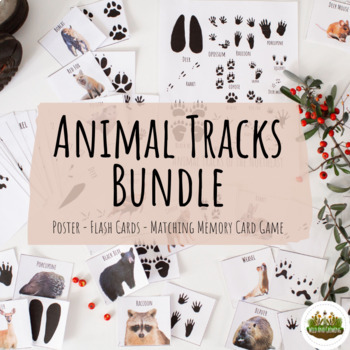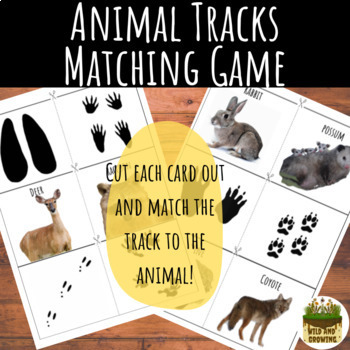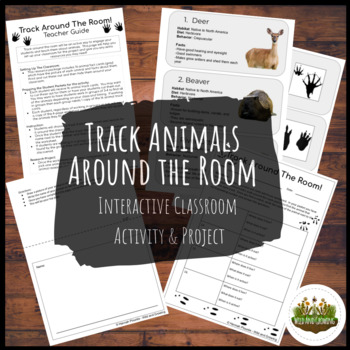Animal Tracks Bundle (Growing)
- Zip
What educators are saying
Products in this Bundle (6)
showing 1-5 of 6 products
Description
Looking for a unique way to teach about animals and their adaptations? Need an outdoor component in your classroom? My Animal Tracks Bundle will get your students learning about animals in their backyards and how their feet have helped them survive in their environment. In addition to learning about animals, your student will be itching to get outdoors and look for tracks.
This bundle includes:
- Animal Tracks Poster
- Animal Tracks Three-Part Flashcard Set
- Animal Tracks Memory Matching Game
- Visual Counting Worksheets (4)
- Bingo Worksheet
- Track Animals Around the Classroom [Interactive Classroom Activity and Research Project]
They all feature 16 different animals:
- Deer
- Raccoon
- Rabbit
- Opossum
- Porcupine
- Coyote
- Gray Squirrel
- Skunk
- Beaver
- Black Bear
- Bobcat
- Red Fox
- Deer Mouse
- Wild Turkey
- River Otter
- Weasel
Why use this resource?
This is a great game to get children learning about animals and their behavior or beginning to learn how to track animals in the wilderness. It's also a great way to teach animal adaptations and how animals survive in their environment. This resource is great to get your class outside in any weather, but especially on snowy or muddy days.
How to use:
Animal Tracks Poster
The poster will be great as classroom decor or as a notebook guide for students. If you plan on bringing it outdoors, I'd recommend laminating a classroom copy.
Animal Tracks Three-Part Flashcards:
After downloading the resource you will need to cut out the flashcards and matching game. Print an extra copy of the matching game to keep for yourself as an answer key. The animals and their tracks directly follow one another.
Animal Tracks Memory Matching Game
The matching game can be played in many different ways. Here are two examples I like using with my students.
- Testing your knowledge, which animal track goes with which animal?
- Memory game: Place all cards face down on a hard surface. Then, select two cards at a time. If they match, set them aside. If they do not match, flip them face down again. Continue until all matches are found.
Animal Tracks Visual Counting Worksheets:
After working with all of the resources above, test your students' knowledge with the Animal Tracks Visual Counting Worksheets. They will need 4 colored writing utensils (red, blue, green, and pink) to complete the worksheet. Students, first, must circle the corresponding animal track with the color instructed on the worksheet. After, they will count how many tracks they found for each animal.
Track Around the Classroom:
After downloading the resource you will need to cut out the animal cards and hide them around your classroom.
If your students are working in groups, print one animal track packet per group. If your students are working individually, print an animal track packet per student. Each student will also need their own copy of the Track Around the Room Worksheets.
Once everything is set up instruct your class that there are animals around the classroom and they will need to use the tracks in their packets to find them. Once they find an animal, they will need to record the animal's name and some information about the animal on their worksheets.
Once all of the students have found all of the animals there is an animal research flipbook template. Students can choose one animal to research further and create a flipbook.
When purchasing the bundle you SAVE 30%.
Resources included in the bundle:
- Animal Tracks Poster Guide
- Animal Tracks Three-Part Flash Cards
- Animal Tracks Matching Game
- Animal Tracks Counting Worksheets
- Track Around the Room [Interactive Classroom Activity & Project]
Consider following me on Teachers Pay Teachers to get alerted when new resources are listed. New resources are 20% off for the first 24 hours they are live. It pays to follow me.
Remember that reviewing resources earns you free TpT credits which you can use to get more TpT products. I love receiving reviews because they help me grow as a seller.
Other ways to connect with me:
As always, thank you,
Hannah
Wild and Growing





